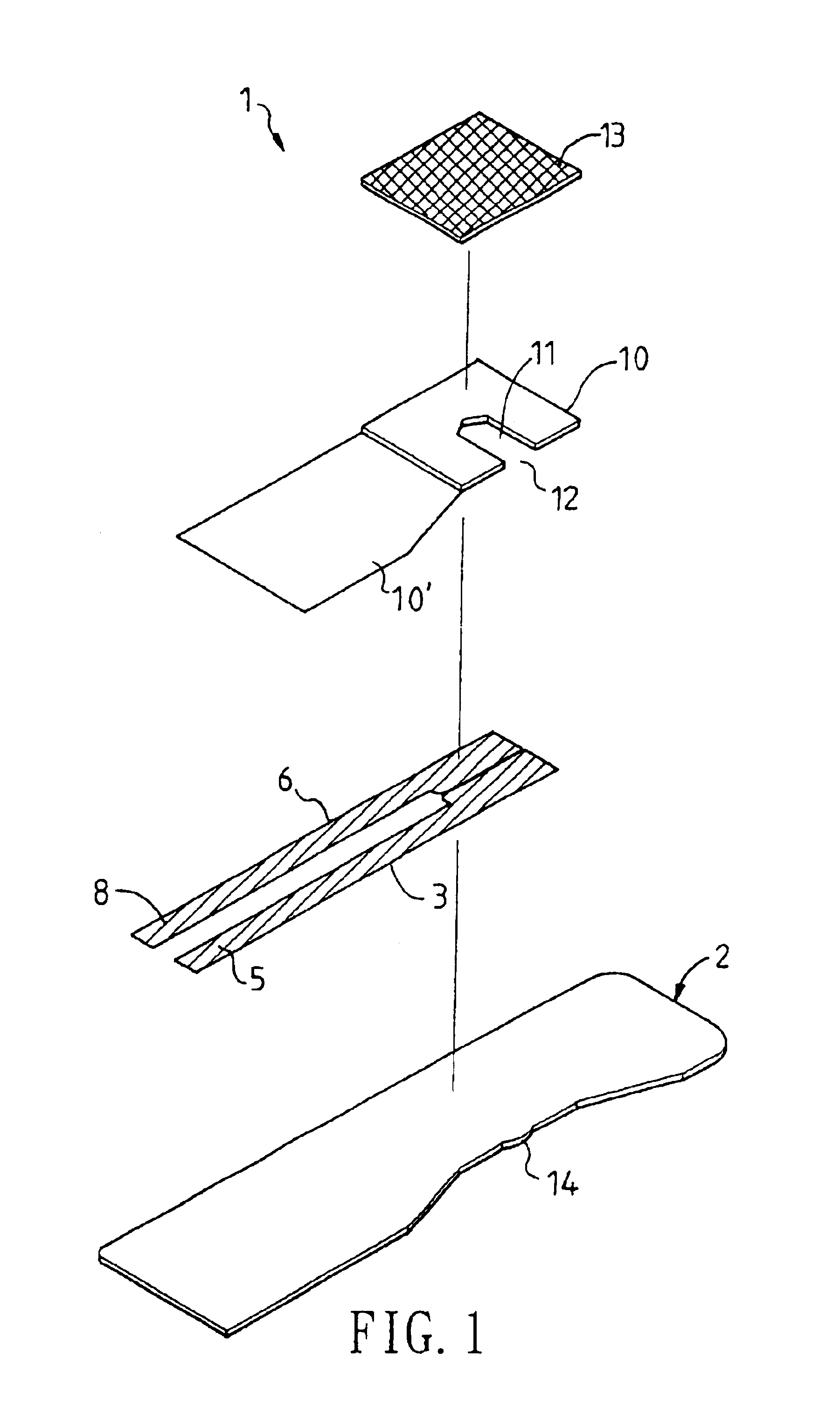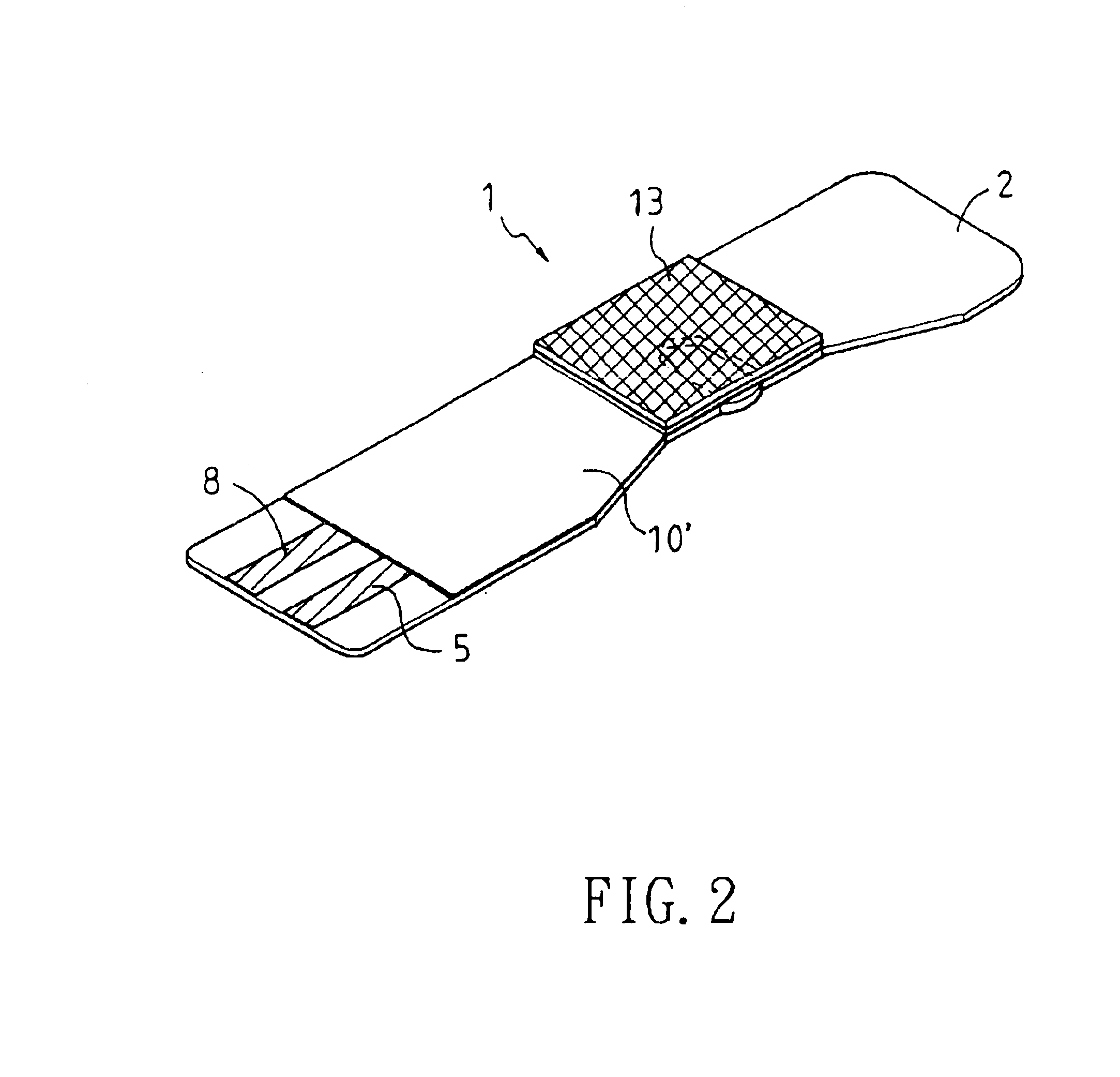Biosensor with multiple sampling ways
a biosensor and multiple sampling technology, applied in the field of biosensors, can solve the problems of oxidation and discoloration of test strips of dry type analyzers, wet type analyzers cannot use whole blood samples as samples, and professional operation is required for wet type analyzers. achieve the effect of simple production and detection, and facilitate sampling
- Summary
- Abstract
- Description
- Claims
- Application Information
AI Technical Summary
Benefits of technology
Problems solved by technology
Method used
Image
Examples
example 1
[0066]A conducting film of carbon ink is screen printed on a flat surface of a PC board substrate 2 to form an anode 3 and a cathode 6 which are independently isolated. The substrate 2 is dried at a temperature of 130° C. Then, a 0.27 mm thick PET electrically insulating layer is disposed on the flat surface to form an anode connector, a cathode connector, a working electrode and a reference electrode by keeping the conducting film partly exposed. The area formed by the working electrode and the reference electrode is the reaction area.
[0067]Then a composition of the following formula is dropped on the surface of the reaction area to form a reaction layer:
[0068]
glucose oxidase0.63%albumin 0.5%potassium ferricyanide 6%methyl cellulose 0.5%Triton X-100 (t-Octylphenoxypolyethanol)0.07%phosphate buffer (pH = 5.0)92.30%
[0069]After the above formula of bioactive substances on the reaction area is added, the test strip is dried at a temperature of 50° C. for 15 minutes. Then a reticular ...
example 2
[0071]Example 2 is almost the same as Example 1, except that the formula is changed as follows:
[0072]
glucose oxidase0.63%albumin 0.5%potassium ferricyanide 6%carboxymethyl cellulose 0.5%Triton X-100 (t-Octylphenoxypolyethanol)0.07%phosphate buffer (pH = 5.0)92.30%
example 3
[0073]Example 3 is almost the same as Example 1, except that the formula is changed as follows:
[0074]
glucose oxidase0.63%albumin 0.5%potassium ferricyanide 6%dextran 0.5%Triton X-100 (t-Octylphenoxypolyethanol)0.07%phosphate buffer (pH = 5.0)92.30%
PUM
| Property | Measurement | Unit |
|---|---|---|
| Percent by mass | aaaaa | aaaaa |
| Percent by mass | aaaaa | aaaaa |
| Thickness | aaaaa | aaaaa |
Abstract
Description
Claims
Application Information
 Login to View More
Login to View More - R&D
- Intellectual Property
- Life Sciences
- Materials
- Tech Scout
- Unparalleled Data Quality
- Higher Quality Content
- 60% Fewer Hallucinations
Browse by: Latest US Patents, China's latest patents, Technical Efficacy Thesaurus, Application Domain, Technology Topic, Popular Technical Reports.
© 2025 PatSnap. All rights reserved.Legal|Privacy policy|Modern Slavery Act Transparency Statement|Sitemap|About US| Contact US: help@patsnap.com



